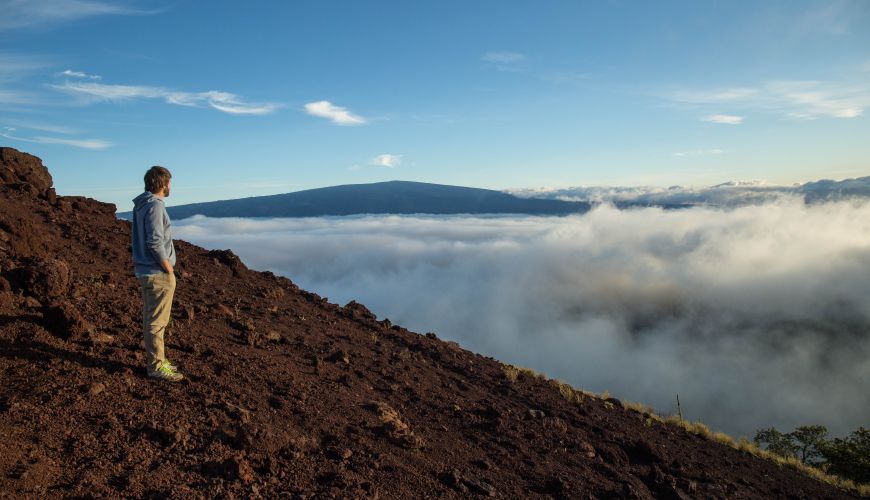
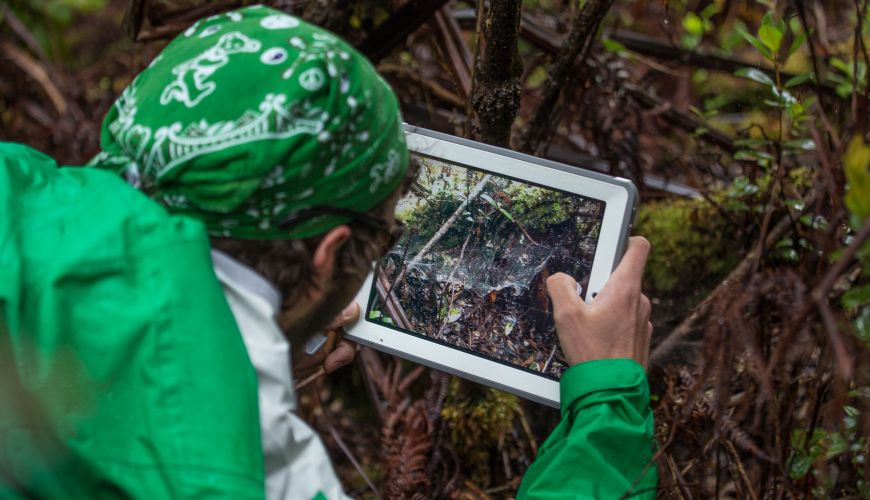
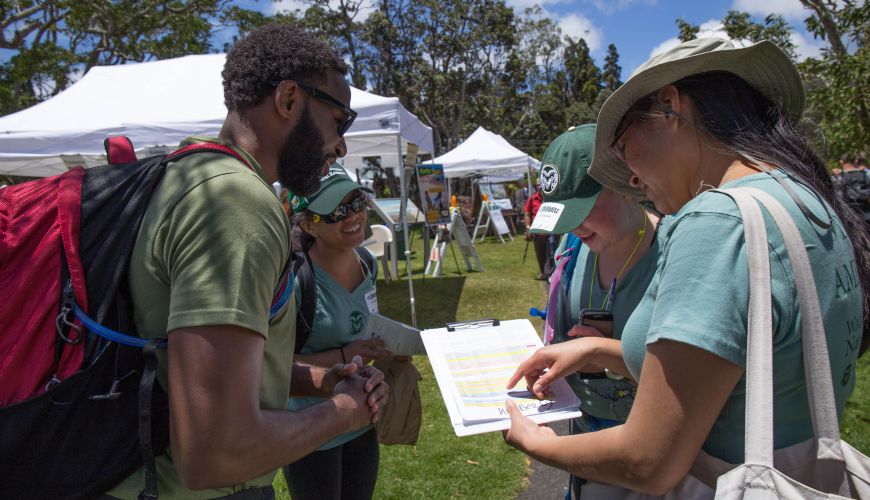
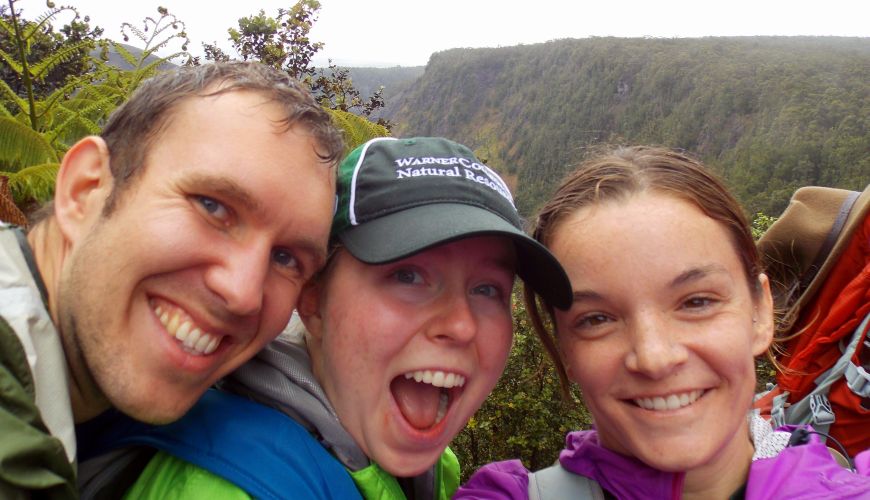
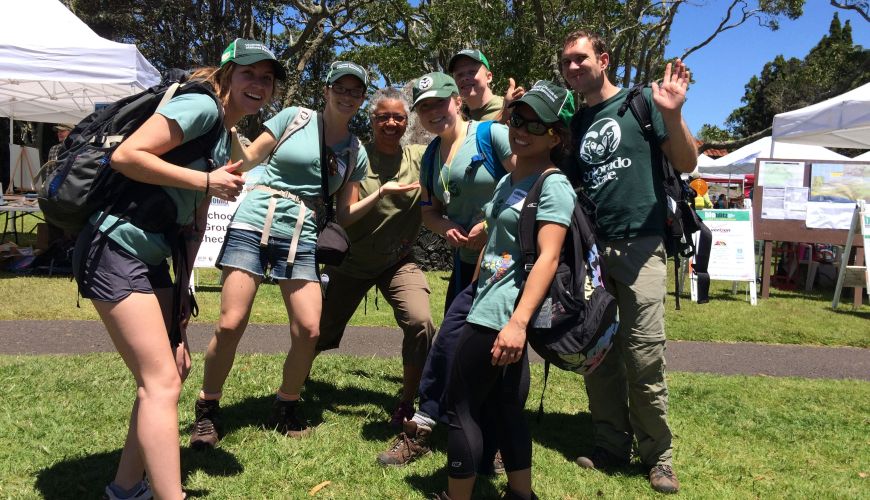
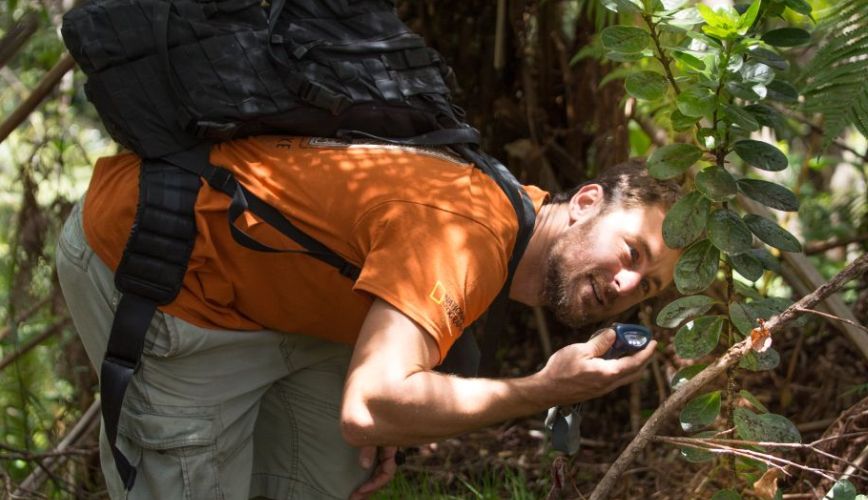
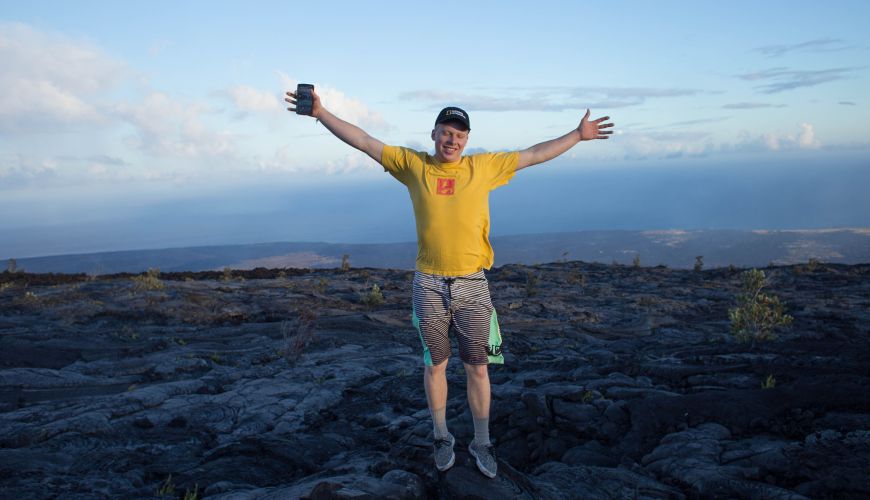
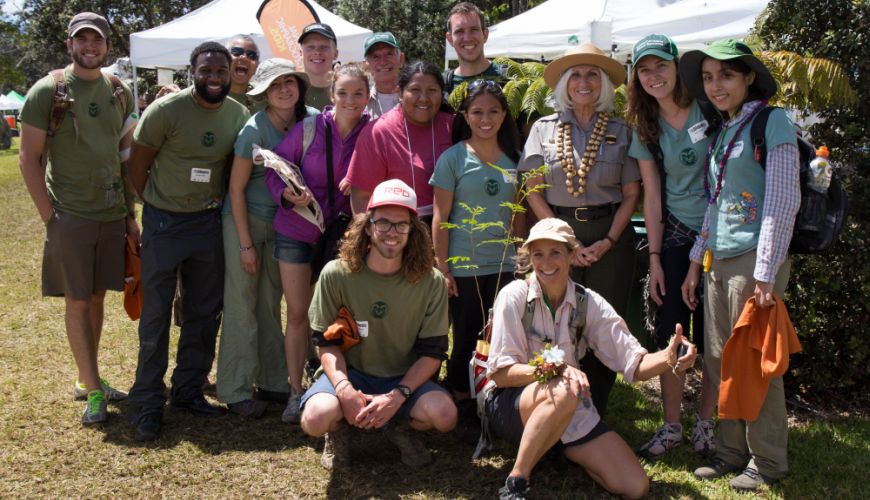
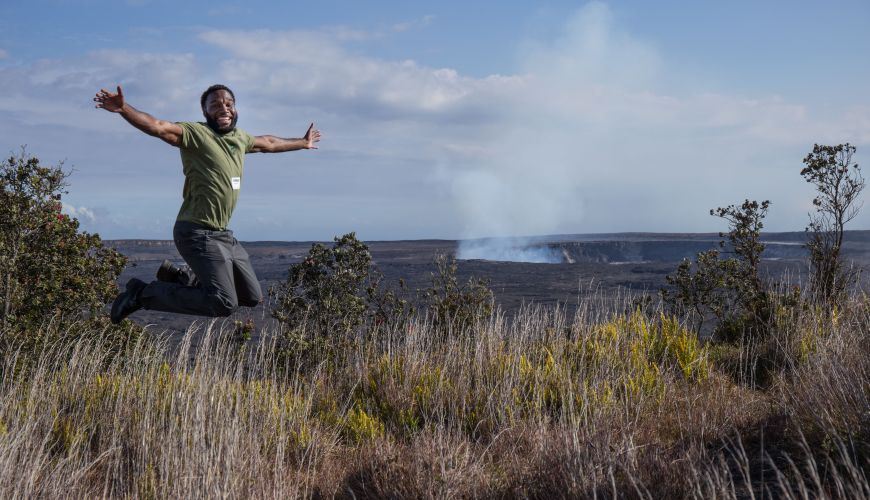
A group of CSU Warner College of Natural Resources students recently became digital ambassadors to assist with species inventories and help participants develop a connection with nature at Hawaii Volcanoes National Park’s Bioblitz.
A new, unique role
The ecosystem science and sustainability students served as digital ambassadors at the event, a new, unique role, developed at CSU. Funding for the program came from the Natural Resource Stewardship and Science office of the National Park Service.
Each ambassador participated in training developed in the Warner College’s Natural Resource Ecology Lab that included technology use, interview skills, taxonomy of species they would likely encounter and how to log scientific observations in real time.
Rapid species inventory
A bioblitz is a rapid species inventory, typically taking place over a 24-hour period. The scientists make observations with the public and teach about their study methods as they gather data together. These citizen science driven events attract a broad spectrum of the public and highlight biodiversity at some of America’s most amazing natural wonders.
The National Park Service and National Geographic have being holding bioblitzes since 2006 at nine national parks including Rocky Mountain National Park, in Colorado, and Golden Gate National Park in California. This most recent bioblitz attracted 6,000 visitors including 800 school children.
‘Encouraging citizens to participate in ecology’
“The digital ambassadors gained a great skill set to encourage citizens to participate in ecology,” said Gillian Bowser, the leader of the digital ambassador program, and research scientist at CSU’s Natural Resource Ecology Lab. “These events often attract a diverse group of participants that are not typically associated with engagement in the National Parks. It’s fantastic that our students were able to help facilitate those experiences and learn ways to involve the public in science.”
During the 2015 Hawaii Volcanoes Bioblitz, the students added scientists’ observations to the iNaturalist database as they happened, saving countless hours of data entry and the pitfalls of reading scientists handwriting for NPS employees. While numbers are still coming in, the students helped to catalogue 800 of the over 1500 observations made by the 150 scientists who participated. All that hard work made the group the leading iNaturalist submitter for the entire event.
Sophomore ecosystem science and sustainability major Sarah Whipple was particularly excited about the entomology hikes she helped lead.
Inspiring budding scientists
“There were young kids on the hikes I covered who were super excited to look for bugs,” said Whipple. “I hope it inspired them to become scientists someday.”
The students were also performing research about the public engagement of the event. Visiting scholar Rachel Lauwerijssen from Utrect University in the Netherlands and his team interviewed diverse participants about their involvement in the event and what they were hoping to learn.
“I hope that we can help the Park Service engage with more diverse audiences and eventually create avenues for more people with diverse backgrounds to take part in natural resources careers,” said Lauwerijssen.
Senior ecosystem science and sustainability major Rebecca Even summed up the program’s impact.
“I hope this program continues,” Even explained. “It wasn’t just a trip to Hawaii, we were part of something so much bigger than that, and that’s very beneficial to us as students.”
Falling in love with nature
2016 marks the National Park Service’s Centennial celebration and bioblitzes are scheduled for parks throughout the country with CSU-trained digital ambassadors assisting and encouraging fledgling citizen scientists to fall in love with nature.
Rocky Mountain Science Sustainability Network: Yellowstone National Park
Seven of the students who participated in the Hawaii Volcanoes National Park Biobliz took off from the Big Island and headed straight to Yellowstone National Park. They served as digital ambassadors on a hike in search of American pikas on Bunsen Peak.
First citizen-science inventory
This was the first digital citizen-science inventory ever at Yellowstone National Park and the students recorded close to 130 species observations, including 40 species of fungi, and a number of American pika observations. The group also got to spend a day observing a wolf pack with a park wildlife biologist and some of the volunteers who help monitor the packs in the area.
The Rocky Mountain Science Sustainability Network is a program dedicated to providing opportunities for youth of diverse backgrounds to build skills in biological sciences at some of the most iconic protected areas in the U.S. Lead support for the 2015 Summer Academy of RMSSN comes from the O’Malley/Beacham Charitable Lead Trust, at the direction of Jeanne Beacham, CEO of Delphon Industries.